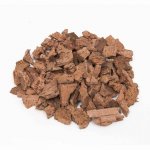How do you go about mixing the charcoal in you with your soil?
I'm talking about indoor/containers, but I have every intention of trying it outdoors this spring. I'm telling all my homies to as well so we may have result reports in the fall if all goes well.
I've noticed that charcoal really absorbs water, so it's very important to water thoroughly the first time to keep the charcoal from robbing the plant.
On a side note, I was running an experiment putting strong 'compost teas' through a backyard biofilter (similar to what you'd find in a koi pond) for a few weeks to see if I could convert some of the ammonia to nitrites and nitrates. The result was a very potent tea that was better tolerated by plants. One day I was crushing up charcoal with a paving stone and just got a wild idea and tossed a couple handfuls of big charcoal chunks (uncrushed) into the biofilter. They floated around about a week and then sank. The sunk pieces were very potent fertilizer when I crushed them into my mix! I'm guessing they absorbed all the converted forms of N (along with other yummy stuff) and made them available to the plants. Anyway, just thought I'd share that idea (as alchemic as it is) in case anyone else want's to run with it.



